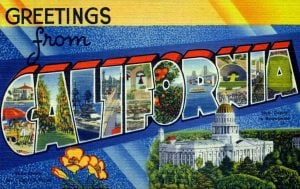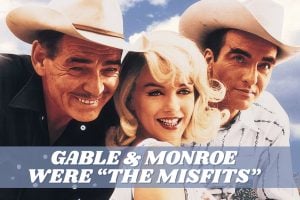OLD PASADENA CITY
The U. S. census of 1900 gave population of 9,117, while the city directory of 1905 indicated there were more than 21,000 residents, showing an increase of over 100 percent in half a decade, and “the end is not yet.” [Estimated 2018 population: 141,371.]

The city is on the [railroad] lines of the Santa Fe, Southern Pacific and the new Salt Lake Route. The Pacific Electric Company has two lines between Pasadena and Los Angeles, a third line under construction.
Colorado Street Bridge

Colorado Street, looking west from Raymond Avenue

Colorado Street, with horse-drawn carriages

OLD PASADENA’S HOTELS
The hotels of Pasadena are known from coast to coast, and the fact that they have been enlarged and refitted on a more elaborate scale, from year to year, shows their increasing popularity.
The capacity of the Hotel Green is 1000 guests; the Maryland (with its cottages), 500; the Raymond, 500; the Pintoresca, 200; and the Guirnalda 100.
Some of the hotels are open only during the winter season, and others run the entire year, so that ample accommodations are furnished to the visitor at any season of the year.
Hotel Green, Pasadena, California


Hotel La Pintoresca

OLD PASADENA’S HOMES (early 1900s)
Pasadena, the crown city of Southern California, is preeminently a city of beautiful homes.
This feature is very striking to the “stranger within our gates,” and to the one who has resided in this Southland long enough to have come into touch with its varied conditions, it presents a never-ending charm.
From the little bungalow to the more pretentious residence, everything seems arranged in an artistic manner, and with a view to comfort.
In older settled communities, the word “cottage” stands for small rooms, with the maximum of inconvenience, but it becomes a matter of surprise to the tourist in Pasadena, to see the small bungalow, with all modern conveniences, and thoroughly up-to-date.
A mansion home on Orange Grove Avenue, Pasadena

The mansion home of Robert Burdette

The huge & beautiful shingle-sided home of Col. Holmes on N Grand Avenue
Durand residence in old Pasadena

The Guyer home, surrounded by trees
Also see: What is a Craftsman house? See exteriors of more than 70 classic Stickley-style homes

The palatial Barnum home in old Pasadena, California
A pretty rose-covered cottage, Pasadena

Gold or Ophir roses covering a cottage home

OLD PASADENA SETTLED IN 1874
The weather conditions make Pasadena unsurpassed as a winter resort, and the number of fine residences in the city, and the increasing number built yearly, attest the fact that the city is gaining popularity from season to season, as it becomes better known.
Pasadena’s history, as a definite settlement, dates from 1874, when a number of men from Indianapolis, Indiana, established a community which, for want of a better name, was called the Indiana Colony.

Ranch of land baron Lucky Baldwin
Pioneer Elias Jackson “Lucky” Baldwin grew up in Indiana, but made it big in California

The lake at Lucky Baldwin’s Ranch

SCHOOLS, COLLEGES, CLUBS & PUBLIC AREAS
The educational facilities offered are gratifying in the highest degree. In addition to Throop Polytechnic Institute, the city has seventeen public schools, with over one hundred teachers; two business colleges, and a number of private schools.
There is a fine public library of upwards of 24,000 volumes, situated in one of the city parks, surrounded by a wealth of semi-tropical vegetation, making an ideal location.
Throop Polytechnic Institute, Pasadena

Wilson School

The Country Club, Pasadena

Public library and park

Vintage Pasadena – City Hall

MORE SIGHTS IN OLD PASADENA
A lack of space forbids detailing all the points of interest about the city; the many accessible canons in the Sierra Madre Range, which stands like an ever-watchful sentinel over the city; the numerous beach resorts, all of which can be reached by electric or steam lines.
There are the mountain camps, among the fragrant pines; the ride to Alpine Tavern and Mount Fowe on the incline and electric railways, a wonderful piece of engineering; the Carnegie Solar observatory, on Mt. Wilson, just completed, costing $100,000; the old San Gabriel Mission — all these and more are of never-failing interest, and are all easily accessible to the city.
During the past year, over 800 dwellings and 100 storerooms were constructed, representing an expenditure of over $1,000,000.
Pasadena’s past, business, social and educational, is more than satisfactory and her future is promising of continually increasing prosperity. What more can be said?
Street view of Marengo Avenue

Marengo Avenue, in old Pasadena

North Los Robles Avenue

Orange Grove Avenue, Pasadena






















